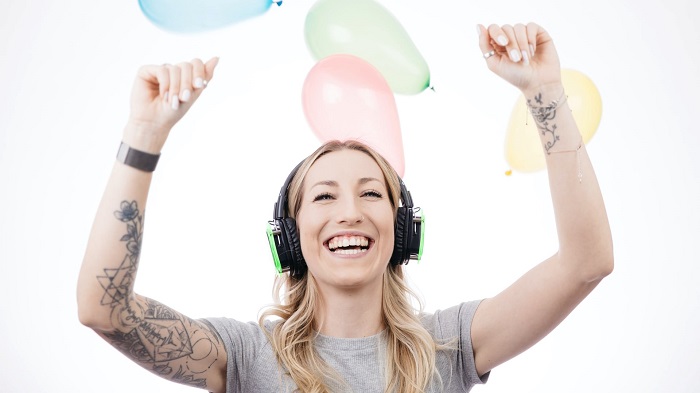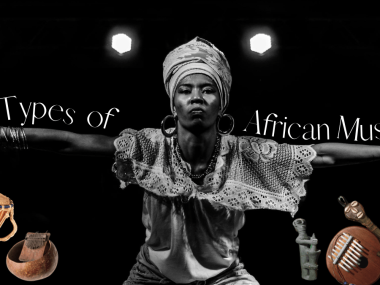Pop quiz: how many dimensions are there? Stop counting on your fingers; there are just three spatial dimensions that I’m aware of, namely height, width, and depth.
I see you’re not satisfied with the answer? Oh, you’re saying that there’s 8D music now and my information is outdated!
First, ouch! This has offended me. Second, it seems you’ve been spending some time on YouTube—because this digit-letter combination of “8D” keeps popping up there like crazy.
Are there actually more than three dimensions? In this post, I address the question: what is 8D music? Stick around!
What on Earth Is 8D Music?
Technically, 8D music is just clickbait because there’s no such thing as eight-dimensional sound. 8D is merely an effect that makes it feel like the song is circling around your head, which makes for an immersive listening experience.
Is 8D Music Worth the Buzz?
It’s true that there’s no such thing as a sound that has eight dimensions. However, this 8D name isn’t completely groundless, as it’s based not on the objective nature of sound, but on how we perceive it.
You know, this whole 8D thing is reminiscent of another trend that was widespread not long ago. So, to get our desired insights about 8D music, what about looking back a little to track how 8D music came to be?
How Did 8D Music Come To Be?

Everyone once in a while, something new is introduced to the internet world and creates a ton of buzz. This 8D phenomenon is nowhere near being the first of its kind.
If we look back a little, we’re going to bump into a similar trend: ASMR. This is short for “autonomous sensory meridian response,” but no one cares about scientific jargon; people care about what they feel—and “feel” is the operative word here.
ASMR provided people with audio and visual stimuli that made them feel ecstatic. For long, the underlying mechanism for the effect ASMR had was unclear—and it still is.
Why am I talking about this ASMR thing too much? Well, because the whole 8D trend started because of ASMR.
We live in a fast-paced world where people are always looking for ways to enjoy similarly pleasant experiences. So, once we’ve had our fill of ASMR, we moved on and created what we’ve labeled as “8D music.*
I mean, the way ASMR dominated the internet was a success worth duplicating. However, in both instances, the “feeling” that these things engender is what earned them their popularity. Because feelings are subjective, don’t expect to see all people agree on these trends.
While many loved the ASMR experience, there were other ones who simply didn’t stand it. The same goes for 8D music; there are folks out there that didn’t feel as impressed by it.
Why? Maybe because 8D music wasn’t that new to them!
Is 8D Music Even New?
While the term “8D” has surfaced recently, the very idea of 8D music is anything but new. Not only musicians and audio engineers would know that, but also anyone with some musical background or knowledge.
After all, applying a reverb effect on songs to add more “space” to the sound is the oldest trick in the book. This trick is one of the early methods that musicians used to make the sound feel more real and immersive.

Reverb is an effect that can be applied digitally in music production. It makes the sound seem as though it’s being reflected from the walls of a room.
This room can be anything from a small studio to a large hall—the sky’s the limit in that regard. There are many reverb plugins with no shortage of options, allowing musicians to tweak the sound to their liking.
Aside from the well-known reverb, there are other more important effects that help optimize the immersive experience of the music. More on that later. For now, know that most of these techniques, especially reverb, aren’t particularly new; musicians have been using them for a long time.
You must be wondering about the reason why 8D music created all of that hype if it isn’t even that new, right?
Long story short, the term 8D has served as a “rebranding” of sorts. In other words, it made the world see this kind of music in a new light, wildly popularizing it in the process.
Does 8D Music Offer a Special Type of Sound?
To better understand 8D music, we have to name it properly—let’s call it spatial sound.
As the name suggests, this is a more sophisticated type of sound. Before getting into it, though, we have to start with the simplest form and build it up from there.
We can divide the sound according to “how much it surrounds the listener” into four types: mono, stereo, surround, and spatial.
Starting with mono, this is the sound that has only one channel. If you’re listening to it with headphones, you’re going to hear the exact same thing in both ears.

Then comes the stereo sound, which introduces new elements to the equation: direction and location. Here, when using headphones, there’ll be differences between the sound playing in the right and left ear. It’s like they’re two different sounds coming from two different directions.
This added variation makes for a richer listening experience, but it comes at a cost, as recording stereo sound requires pricier equipment and the stereo track has a larger file size.
Moving on to the surround sound, what’s special about this type is that the sound channels are no longer going to be just right and left. The number of channels will be cranked up to around seven.
I hear you asking, how come? We have only two ears!
In short, surround sound manipulates our perception. Normally, our ears have the ability to detect the direction and location of the sound. If a loud collision took place two feet behind us, for instance, we’ll be able to approximately locate the source of the noise—even before looking.
Techniques that increase the channels of sound capitalize on this perception, creating the illusion that the sound is surrounding us, hence the name “surround sound.”
Of course, surround sound isn’t even the pinnacle of it—because you know what type truly deserves to be on top: spatial sound, or what they call 8D music.
How Does 8D Music Work?

Unlike surround sound, 8D music doesn’t content itself with two, five, or even seven channels. Instead, it aims to create an encapsulating, immersive atmosphere—by making the sound seem like it’s traveling around you in 360 degrees.
This kind of spatial sound can come in one of two forms; it could be binaural or object-based. The latter type is what you listen to on high-quality TVs and radio, as the sound is made to be played via loudspeakers.
The other type, the binaural, is the one used in 8D music because it’s tailored for headphone listening. Either way, the process of creating 8D audio can start during recording by using specific microphones and equipment—the more high-end the better.
However, the spatial effect that’s applied to most of the 8D songs that flood YouTube has nothing to do with the recording.
How Do Musicians Create 8D Music?
Before a song is ripe and ready for your listening pleasure, it passes through a number of stages. One of them is post-production, and, as the name implies, this stage takes place later on after recording.
During post-production, the musician applies something called the panning effect, which makes the sound go through different channels. By that, I don’t only mean left and right.
The panning effect sheds light on what lies between these two extremes. In a sense, it creates a sound landscape—which is the feeling that the sound is moving on a spectrum from the far left to the far right and vice versa.
For added effect, musicians also apply another technique that we mentioned before: the reverb, which is often used in conjunction with panning. True to its name, the reverb effect makes the sound reverberate, creating the feeling like you’re in a live concert.

The fact that the panning effect can be applied to ready-made songs way after recording was greatly beneficial. That’s as it enabled non-professional musicians to turn existing songs into 8D, gaining tons of subscribers in the process.
Of course, you know that I’m referring to the trendy Youtube channel, 8D Tunes. This channel has got over seven million subscribers by applying the 8D effect on the songs of famous artists—ranging from Imagine Dragons to Drake and Travis Scott.
Thanks to the ability of the 8D effect to go well with any music genre, rave reviews keep pouring in about the wonders of 8D music.
From the way people love this trend, I guess we’ll see something that improves on it and offers an even more enjoyable experience in the foreseeable future. Of course, when that happens, we’ll be here to cover it!







